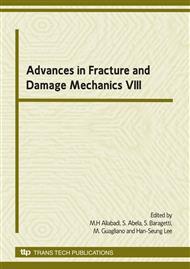p.921
p.925
p.929
p.933
p.937
p.941
p.945
p.949
p.953
Numerical Simulation on Residual Stress Distribution of the Pipe-Plate Welding
Abstract:
The pipe-plate welding is a common type of joint in almost all industries. However the presence of residual stresses can be detrimental to the performance of the welded product. Therefore a good method for accurate estimation of the welding residual stress is needed. In this paper, three-dimensional finite element analysis is carried out to simulate pipe-plate structure. Based on the ANSYS software, the residual stress distribution of the pipe-plate structure during welding and after welding is predicted. The calculation results show that the residual stress of weld bead is higher than other places. The radial stress, hoop stress and axial stress are not significantly sensitive to the angle.
Info:
Periodical:
Pages:
937-940
Citation:
Online since:
October 2009
Authors:
Price:
Сopyright:
© 2010 Trans Tech Publications Ltd. All Rights Reserved
Share:
Citation:


